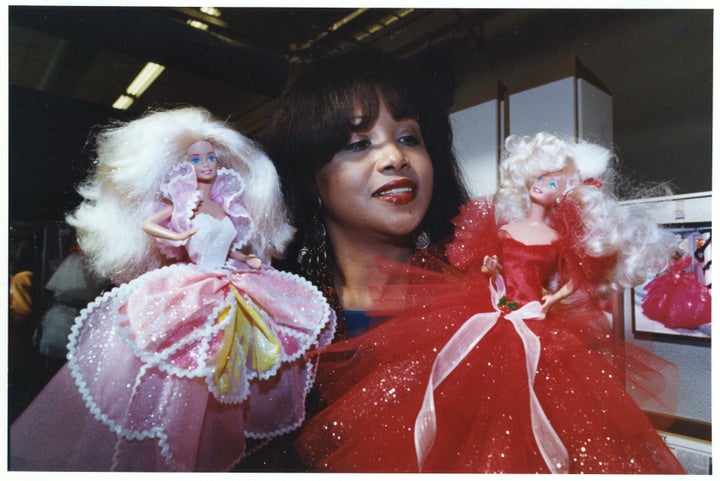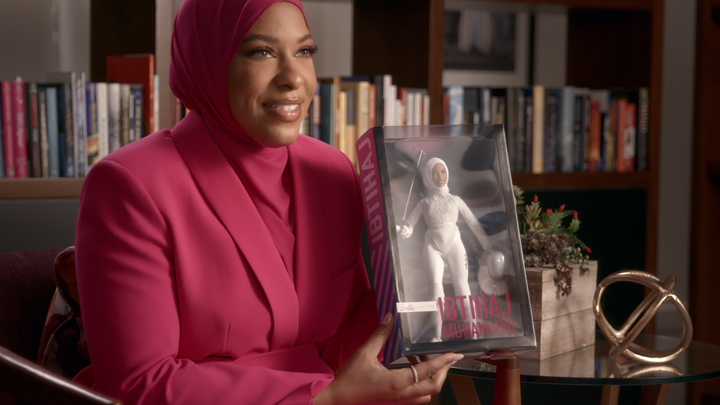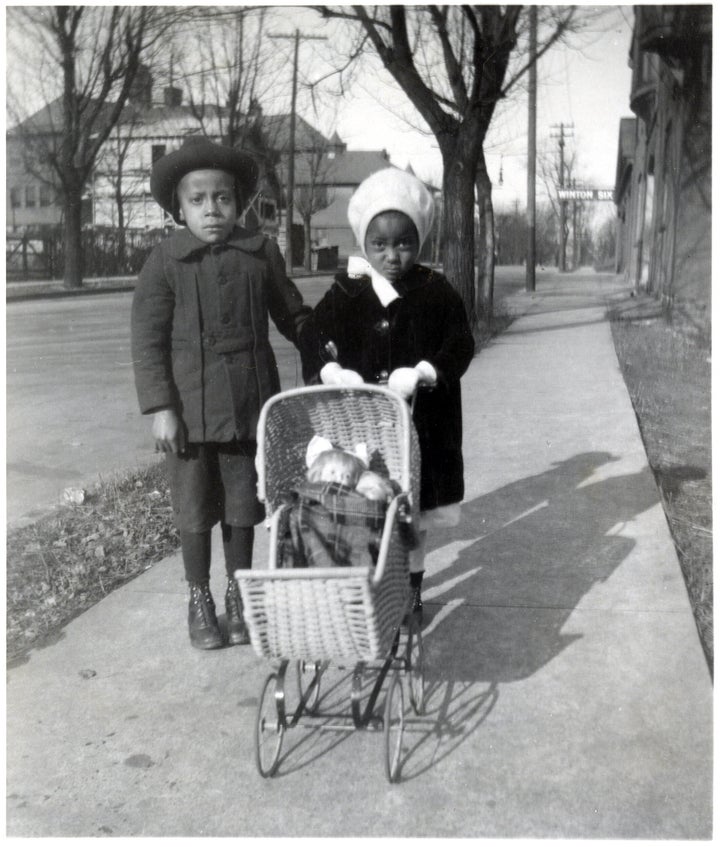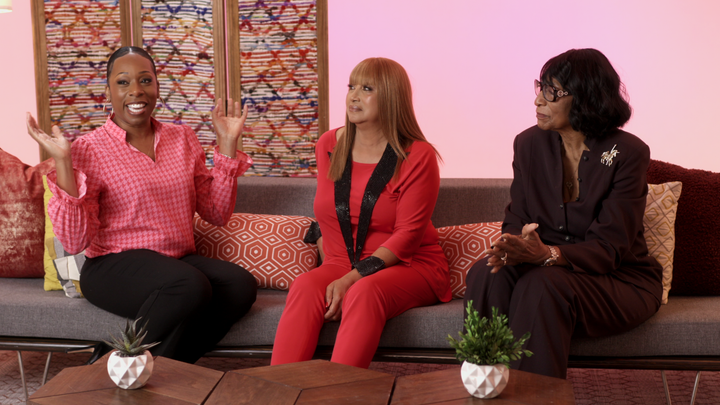
In many ways, the release of Black Barbie: A Documentary was inevitable. Months after Barbie hit cinemas and melted the minds of white feminists everywhere, an examination of the actually groundbreaking path of the single Black doll at the periphery of that movie seems marginally necessary.
That’s partly because pop culture has been in a yearslong “representation” phase in which, for example, a film that rightfully asserts the existence of Blackness in a stereotypically white space like Barbie’s is sometimes considered essential for that alone. But is Black Barbie good? It occasionally feels like that should be less important than what it’s about.
From writer-director Lagueria Davis, Black Barbie tells the doll’s origin story, in part through the testimonies of the Black women who helped bring her to fruition. One of those women is the filmmaker’s own aunt: Beulah Mae Mitchell, who in 1955 was one of the first and only Black employees at Mattel hired as a toy tester.
This affectionate and personal spirit is an undercurrent of the documentary, in which Davis is also a character. Through voice-over narration, she tells the audience that she’s anti-doll or, perhaps more accurately, a Barbie sceptic who is initially unable to see why so many people, particularly Black women like her aunt, would still today be captivated by a toy.
Most of Black Barbie — the whole first hour of its 90 minutes, to be exact — illuminates that through a long-gestating narrative around representation. Prior to 1980, all Barbies were white. It wasn’t until Mattel hired its first Black designer — Kitty Black Perkins, who is interviewed in the documentary — in 1978 that the reality of a Black Barbie was seriously considered.
Before then, it was just something that Mitchell and a few others pitched to the otherwise white and noncommittal Mattel team. With Perkins leading the charge, Black Barbie was born. And subsequently, a generation of Black girls — at the risk of sounding trite, though that would mimic many of the sentiments repeated in Black Barbie — began to see themselves reflected in the dolls.

“Crowning this doll as Barbie is telling the world that Black is beautiful, too,” actor Ashley Blaine Featherson says in the film.
Former Miss Black California Isis Mckenzie Johnson gets emotional thinking about what the doll meant to her: “There was nothing that I could relate to when I watched television that I could associate with myself and find an escape from the reality that was beating me up because of the way that I looked.”
Monica L. Bailey, a community coordinator and storyteller, recalls putting hair grease on her white Barbie dolls and coloring their eyes brown to connect them to her. “Having that as a standard made me and other Black girls feel inadequate,” she says. “I needed to be them.”
She begins to cry during what she says next: “I just remember not feeling like I was beautiful because of my skin and my hair texture, and being around people who didn’t look like me, didn’t accept me. It was very trying.”
There are several more moments like that throughout Black Barbie, successfully capturing the doll’s impact on Black girls in particular. But at the same time, these feel heavy-handed and don’t really challenge the narrative or move it beyond what you might expect to see in a story like this.
To add to that, there are platitudes about Black Barbie from others interviewed — like “it allowed the Black girl to be the heroine of the story”, a line from Patricia A. Turner, a professor in the African American Studies Department at the University of California, Los Angeles.
Or this note about white Barbie from Shonda Rhimes, an executive producer of the film: “When you’ve gone your whole life and have never seen anything made in your own image, there is damage done.”

Black Barbie also includes interviews with various Black women who were firsts in their own right and now have Barbie dolls modelled after them. But it feels as though their accomplishments are being likened to the existence of a toy.
Among them are Misty Copeland, the first Black woman to become principal dancer with the American Ballet Theatre; Ibtihaj Muhammad, the first woman to wear a hijab while competing for the U.S. in the Olympics; and Shonda Rhimes, the first woman to create three hit shows with more than 100 episodes each.
Davis’ apparent effort to have firsts celebrating a first, while as hackneyed as some of the earlier moments in the film, gets the point across. But Black Barbie highlights a far more interesting statement in its last act as the film interrogates the real-world impact of Barbie on racially diverse kids today, which finally shakes the table in this otherwise conventional story.
“I think Barbie is not going to do anything that you have not done,” says Antwann Michael Simpkins, a candidate of philosophy in UCLA’s Sociology Department. “And that’s on the parent end, as well as Mattel’s end. I don’t want to place onto Barbie the work that we should be doing as a society to dismantle.”
Simpkins goes on to suggest that neither Barbie nor Mattel should bear the sole responsibility of affirming children’s self-worth and identity.
“The ultimate in-work of authentic diversity, equity and inclusion is to disrupt the institutions, the violent structures, the violent dolls, the doll-like worlds that exist because of the long legacy of colonialism,” Simpkins adds. “Until we are doing that work, we’re just playing with ourselves.”
This is such a mic-drop moment that the documentary literally just moves on to the next scene entirely. But, thankfully, it doesn’t drift away from actual conversations in the classroom and the real world, making the last half hour of Black Barbie the most fulfilling part.

That’s because it does what the bulk of the film isn’t bold enough to do: explore the limitations and, oftentimes, the futility of representation, as well as some of the dialogues around it.
For example, Black Barbie re-creates Mamie and Kenneth Clark’s “doll test” from the 1940s, when the two psychologists showed kids a Black doll and a white doll — identical in every way except the colour of their skin — and asked them which they one preferred. The results often concluded that kids across the racial spectrum were conditioned to think the white doll was better.
Beyond its eye-opening roundtable of researchers and educators, led by Amirah Saafir, a professor of child and adolescent studies, Black Barbie follows relationship expert Yeshiva Davis, a licensed marriage and family therapist, as she duplicates the doll test today. This time, she uses dolls spanning the racial and gender spectrum.
The conclusions are not much different than they were in the 1940s.
At one point in the film, a young Black boy points to a white Barbie doll when asked which is prettiest, while several Black girls consider a few of the Black Barbies pretty and take pride in the fact that they affirm their own beauty. But when asked which of the Barbies is the real Barbie, they all point to the white doll.
It’s a startling reflection of how far we haven’t come, in spite of the first hour of the film painstakingly ruminating on the opposite. Or maybe it’s more that representation is relative. Actor Gabourey Sidibe, for instance, chides the look of the original Black Barbie for being “light-skinned”, while others point out the lack of kinks in her Afro.
“I preferred that colour,” Perkins says plainly when asked about the Barbie’s skin tone.

The birth of Black Barbie showed that change was possible in the toy world. But how much has it actually done in the real world, especially today when children, as highlighted in other scenes throughout Black Barbie, are more particular about the images they want to ingest?
It’s not just about the existence of a product, the toy’s booming popularity or even the billions of dollars it makes. It’s about how kids feel about themselves, beyond the ability to play with a doll that might look like them. While their self-affirmation on account of the toy is uncertain, the success of the still largely white and male Mattel has essentially always been guaranteed.
In fact, in the years after Perkins and her successor, Stacey McBride-Irby, left Mattel, a white man named Bill Greening became the designer of Black Barbie. Black Barbie, gratefully, doesn’t shy away from challenging why that is, including in interviews with Greening and others at Mattel that tout how far the doll has come while occasionally deflecting valid criticism.
(Awkwardly, Mattel seems to have considered the issues raised in the documentary, since the film’s postscript includes a statement noting examples of progress. These include the company’s Future Leaders Innovating Play initiative, which provides internships to Black undergrads across the nation. It also explains that three participants in the program have been hired as full-time employees.)
Like with last year’s Barbie, the question becomes whether commercialised representation is enough to satisfy underserved communities, or if we’re going to do the real-world work of demolishing societal, educational and familial conditioning that influences self-worth starting at a young age.
We can talk about representation as it pertains to the art we consume or the toys that we gleefully play with all day — and we already have, exhaustively. But beyond making white corporations more money, it really does too often feel like, to borrow Simpkins’ words in Black Barbie, we’re just playing with ourselves.
Black Barbie: A Documentary is now streaming on Netflix.
